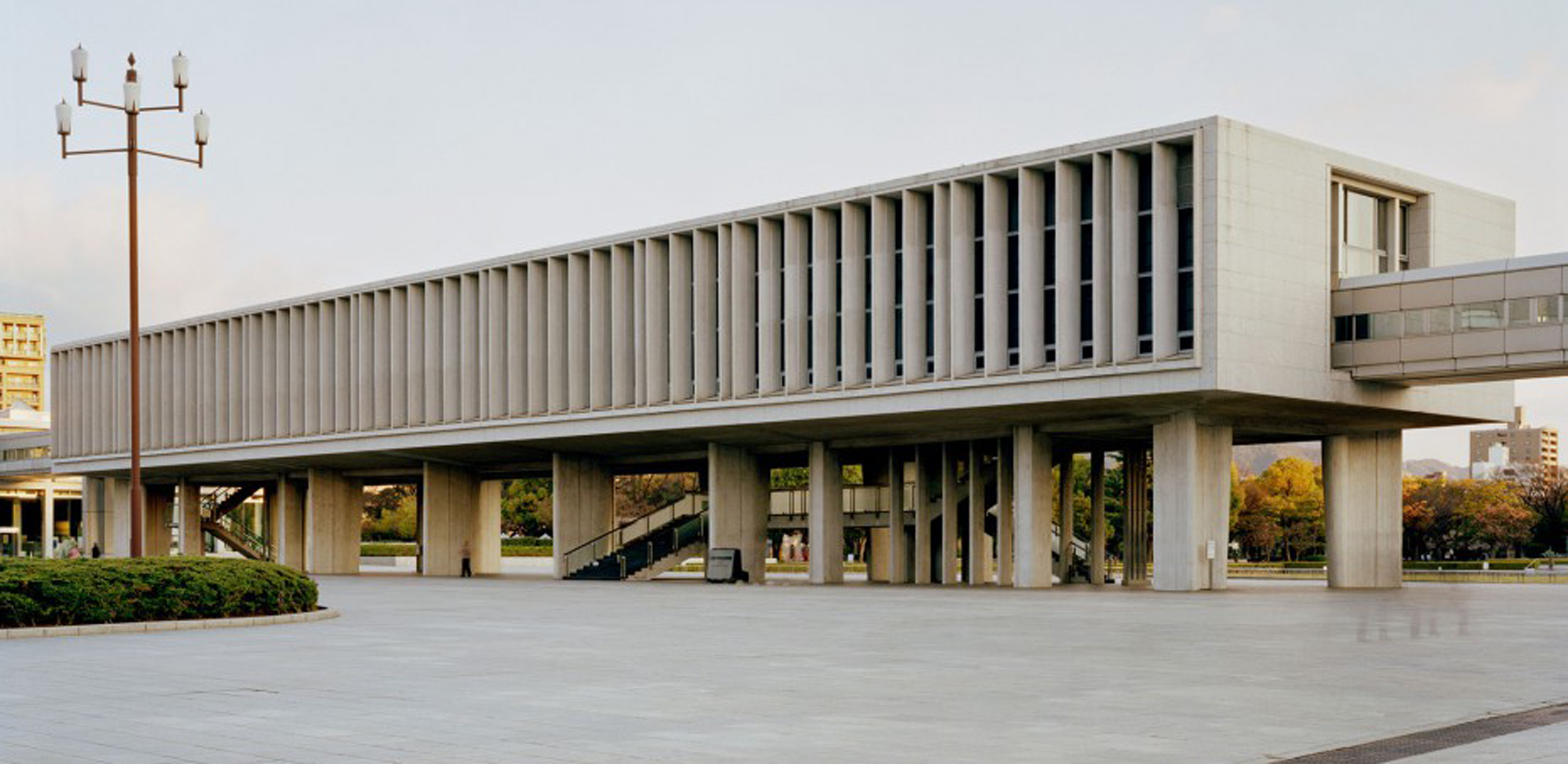The First City in History
Fiona Amundsen
15 June 2011 - 15 July 2011
The First City in History: roomsheet

Fiona Amundsen, Hiroshima Peace Memorial Museum Main Building, Hiroshima, 29/03/2010, 6.28 (shadows and people)
The title of this project refers to the Japanese city of Hiroshima which was the first city in history subjected to nuclear warfare when it was bombed by the United States during World War II. At the time of its bombing, Hiroshima was a city of industrial and military significance, acting as a supply and logistics base for the Japanese military, as well as a key port for shipping, a communications center, a storage point, and an assembly area for troops. In addition to this, Hiroshima, unlike other major Japanese cities, was relatively untouched by American bombing resulting in an environment where the carnage of warfare was not evident: this allowed the damage caused by the atomic bomb to be clearly measurable. The nuclear weapon dubbed Little Boy was detonated near the Hiroshima Prefectural Industrial Promotion Hall (now referred to as Genbaku Dome), a strategically located building in this fully urbanised industrial city. The effects of such planned bombing were enormous – wiping out most of the city’s infrastructure and killing thousands – and have come to both define and determine how this first city in history functions culturally, economically, socially, and definitely politically.
As the destroyed Hiroshima was rebuilt the redevelopment and planning of its city centre involved honouring its history, while also taking a political position. In brief, the area below where Little Boy was detonated remained structural intact because of how the bomb’s blast occurred: part of the Genbaku Dome, along with surrounding areas, was left standing. Subsequently, Hiroshima was rebuilt around these surviving remnants, and the Hiroshima Peace Memorial Park was constructed as an acknowledgement of the city’s recent experiences. The park and walkways, situated in the center of Hiroshima, are edged by two of the city’s seven rivers, which act as boundaries that mark this once busy downtown commercial and residential area, while also serving as reminders of the horrors of nuclear warfare and as an advocation for peace.
The First City in History seeks to explore the disparity between the uniquely subjective experiences of being in historically and culturally loaded public sites such as the Hiroshima Peace Memorial Park, and their representation through photography. This project also plays on the socio-cultural understanding of both site and photography – the former is linked to how photographs actually do reveal something about what they depict, while the latter is grounded in the notion that space itself is always ‘cultural’. Subsequently, what these photographs disclose have more to do with the invisible structures that make up a city but can’t necessarily be seen in a photograph – things like politics, economics, the social and cultural profiles of a city, its history, all of which influence how a city ends up looking. The First City in History uses specific formal compositional relationships within each photograph’s content to highlight such complexities, upsetting the usual social conventions and narrative associations of photography. It is the little shafts of glowing sunlight, or the soft flow of the sea, or the direction of the lines on the pavement, or the curves of the architecture which become stilled through their photographic representation and therefore begin to offer something else within the usual cityscape, something not normally noticed. These aesthetic traits quite literally point to a different way of looking which then becomes tightly connected to experiences of being in such historically loaded sites. Ultimately, this project uses photography’s affectual potential to investigate how socio-cultural historical narratives (ie: Hiroshima’s nuclear bombing) are preserved and then re-enacted through a city’s architecture and planning.
Text sourced from www.fionaamundsen.com